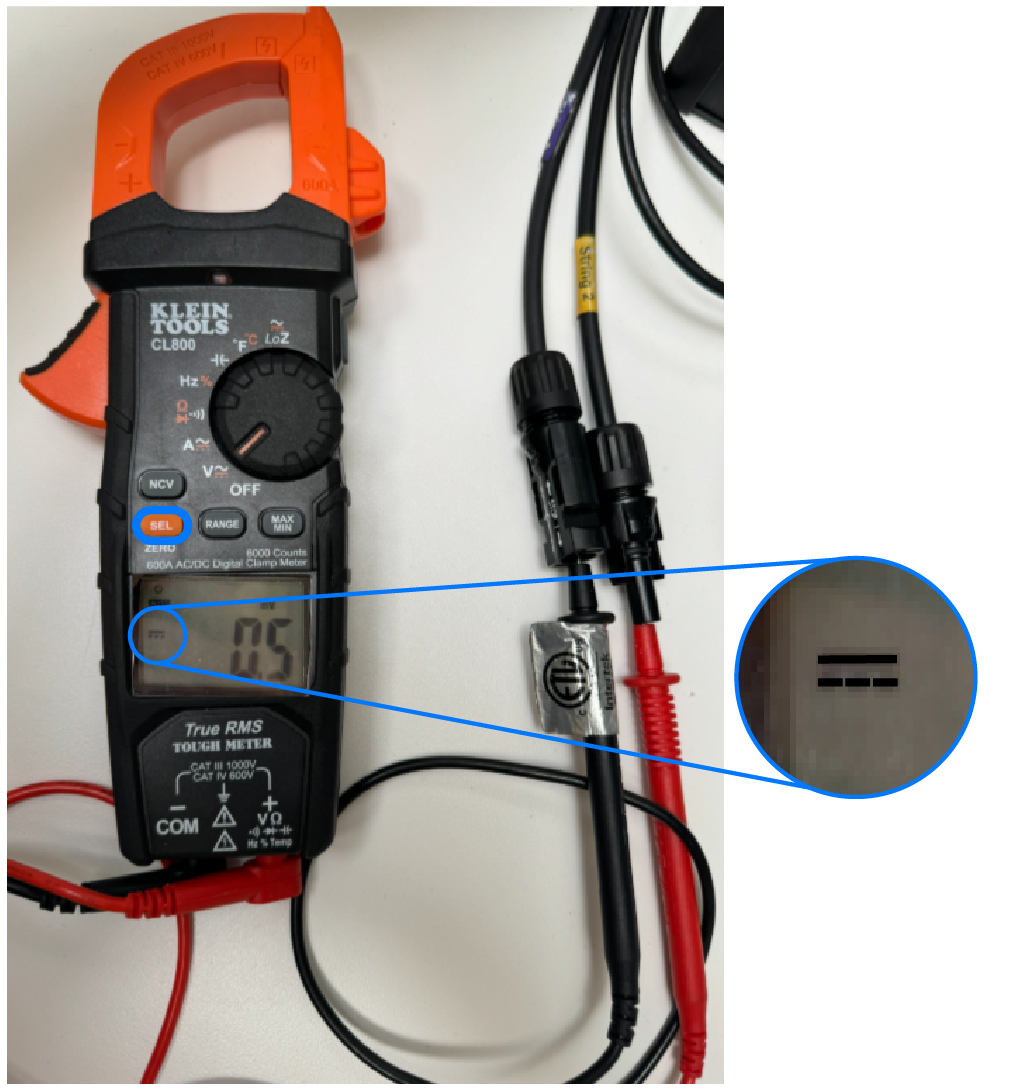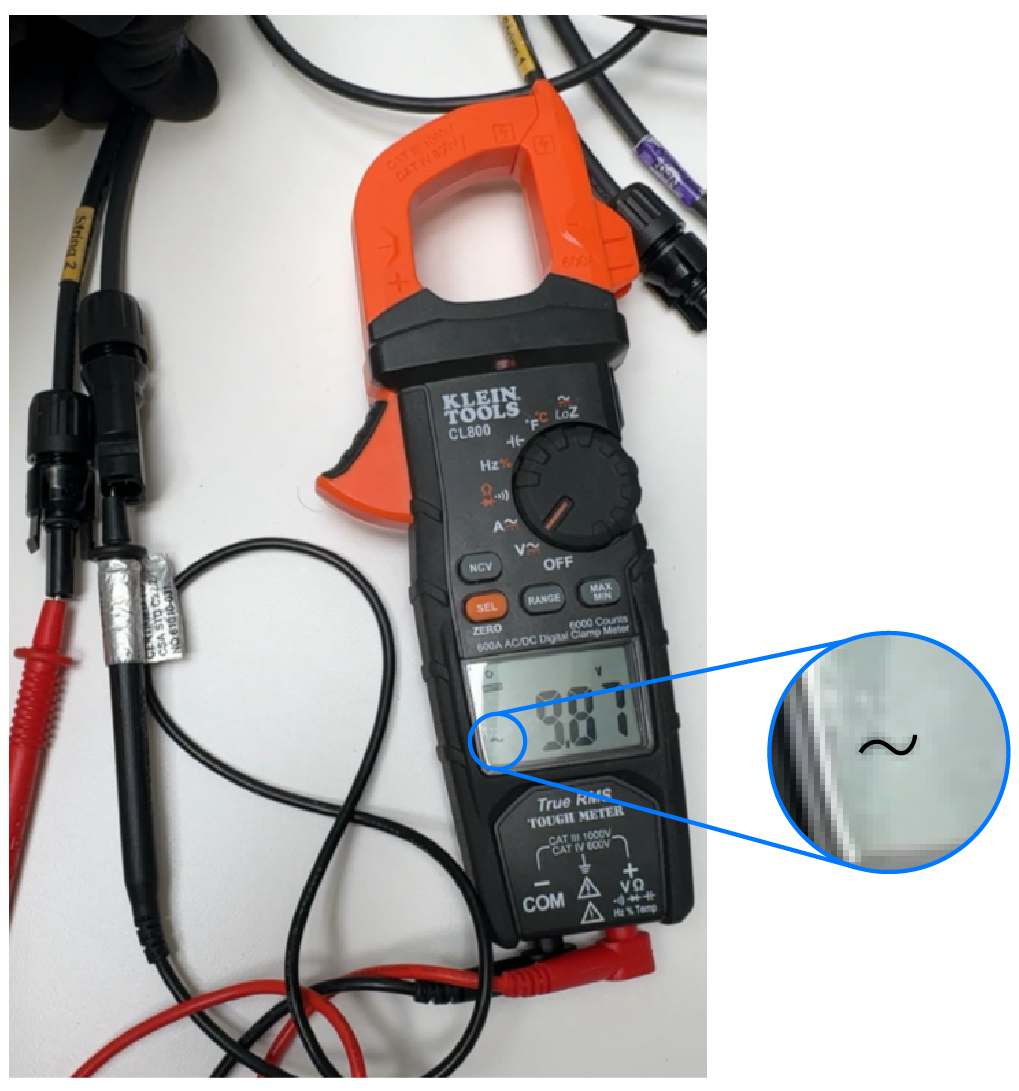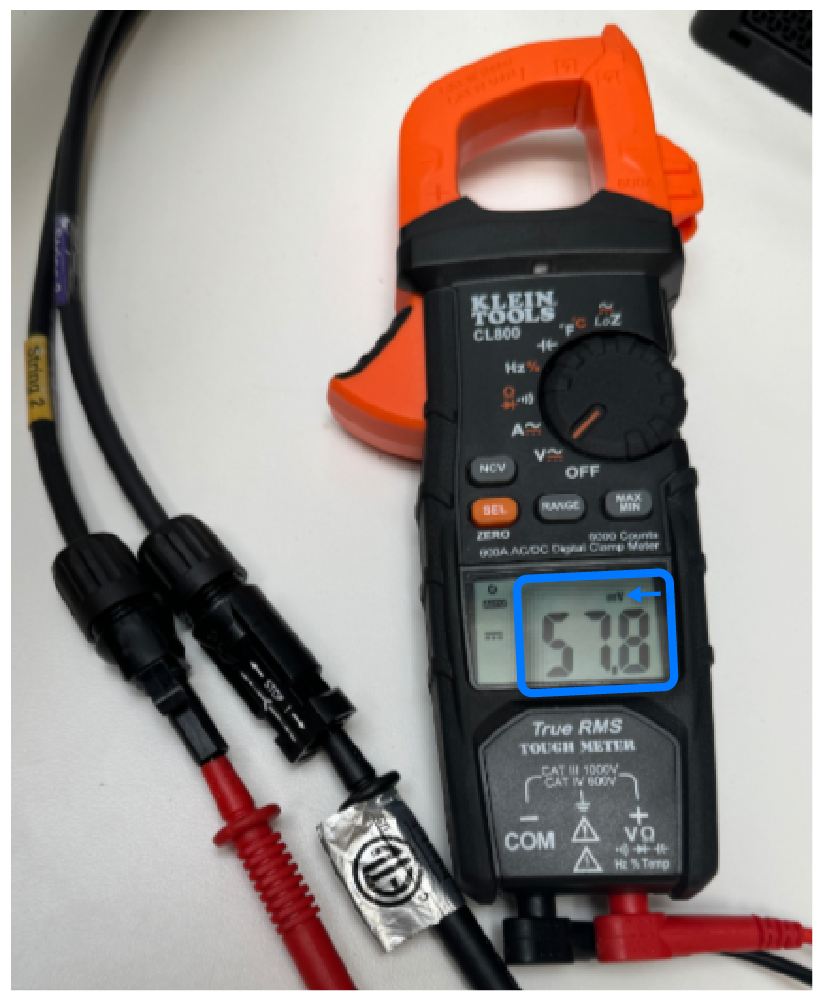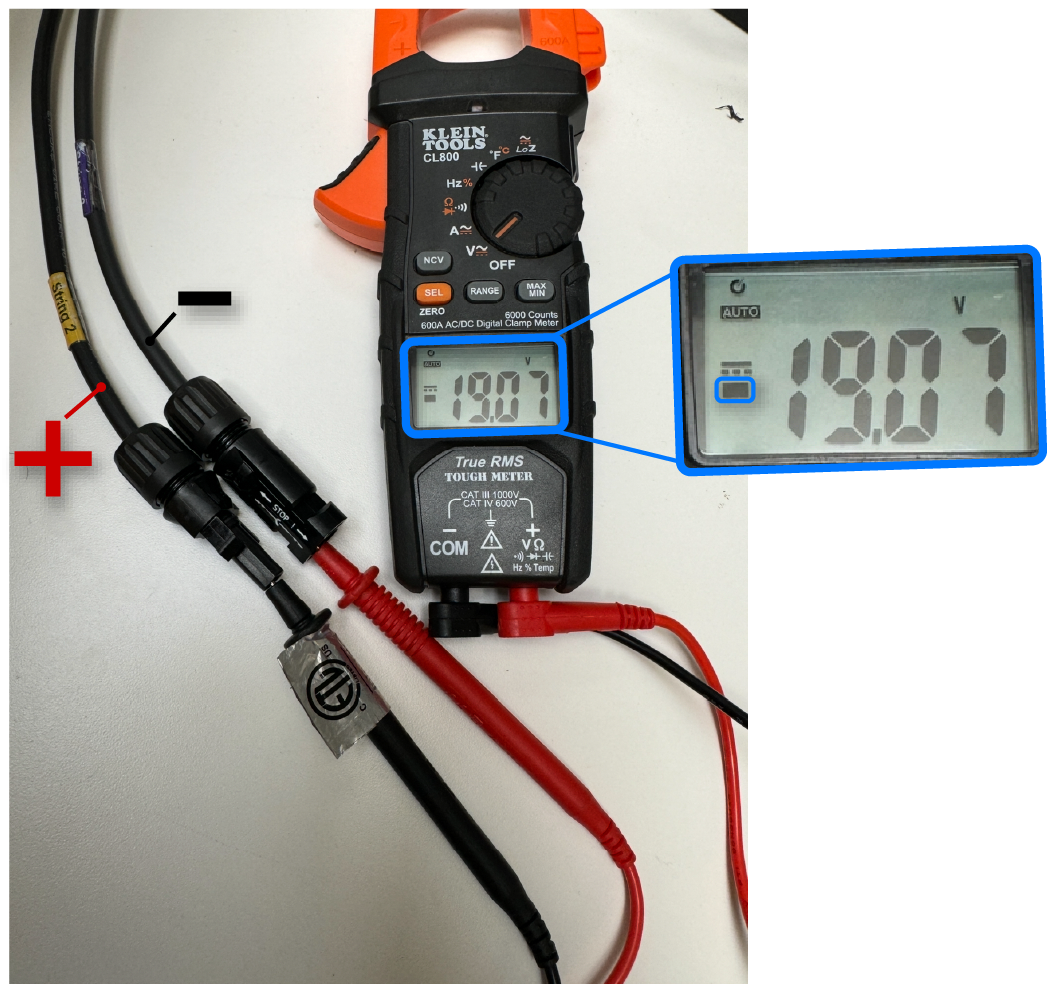DC Voltage Test (Completed String and Polarity)
- Verify that the string polarity is correct
- Detect any open circuits
- Identify whether a string has been combined after a parallel connection
This test is performed before connecting the solar conductors to the Powerwall+ / Tesla Solar Inverter MPPTs and turning the system on, and before performing an insulation resistance test on the string. Because MCIs have a very high resistance when open, normal DC voltage testing will not provide accurate VOC readings. The test is especially useful when performed near the Powerwall+ / Tesla Solar Inverter.
Required Tools
Insulation resistance tester or multimeter in DC test mode
- Klein ET600
- Klein CL800
- Fluke 374 FC
Perform DC Voltage Test
- Set the tester to DC test.
Klein ET600 Klein CL800 Fluke 374 FC 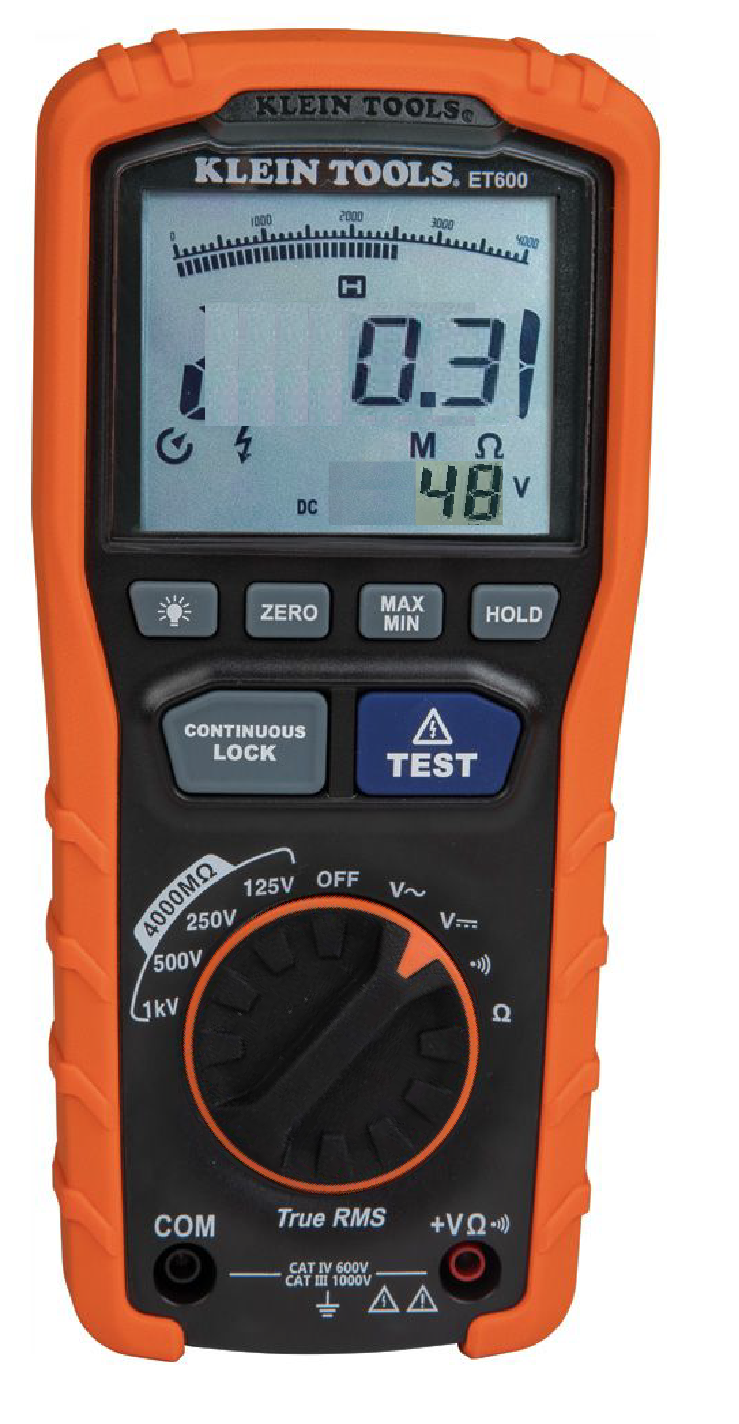
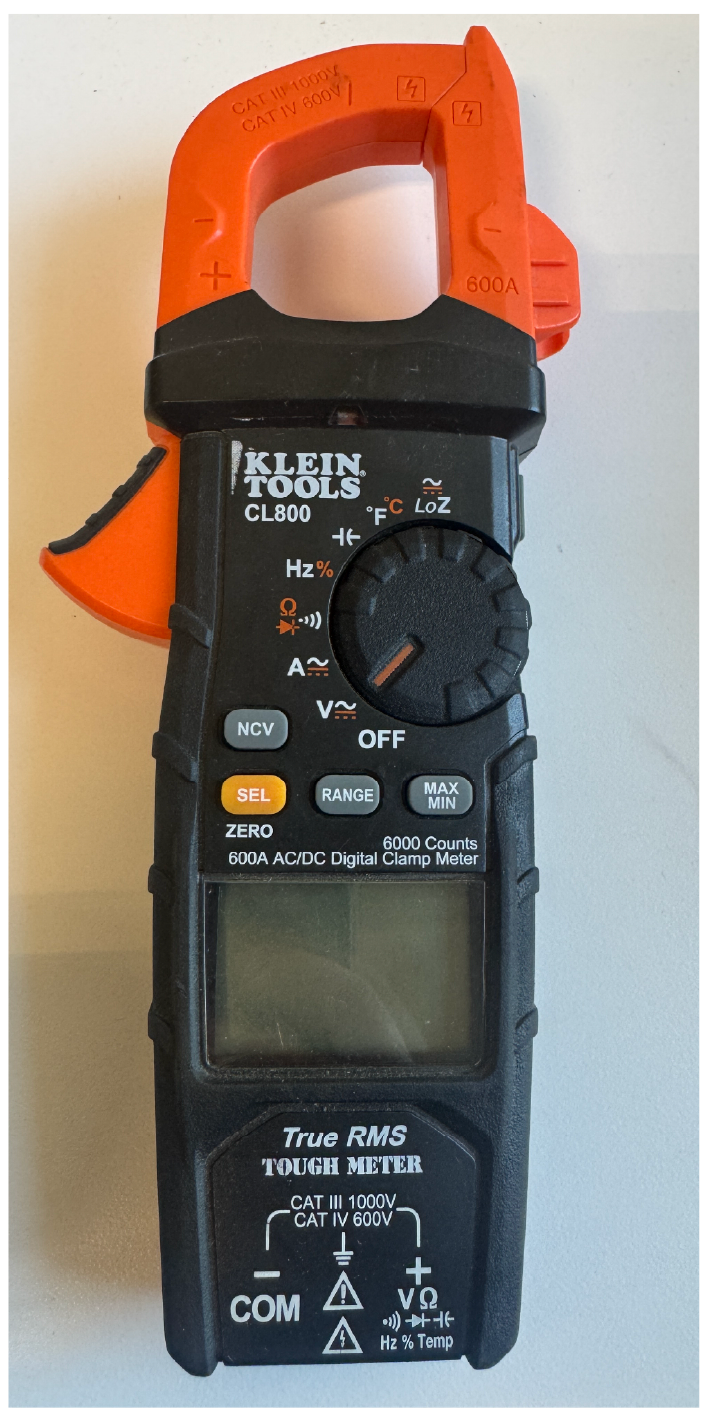
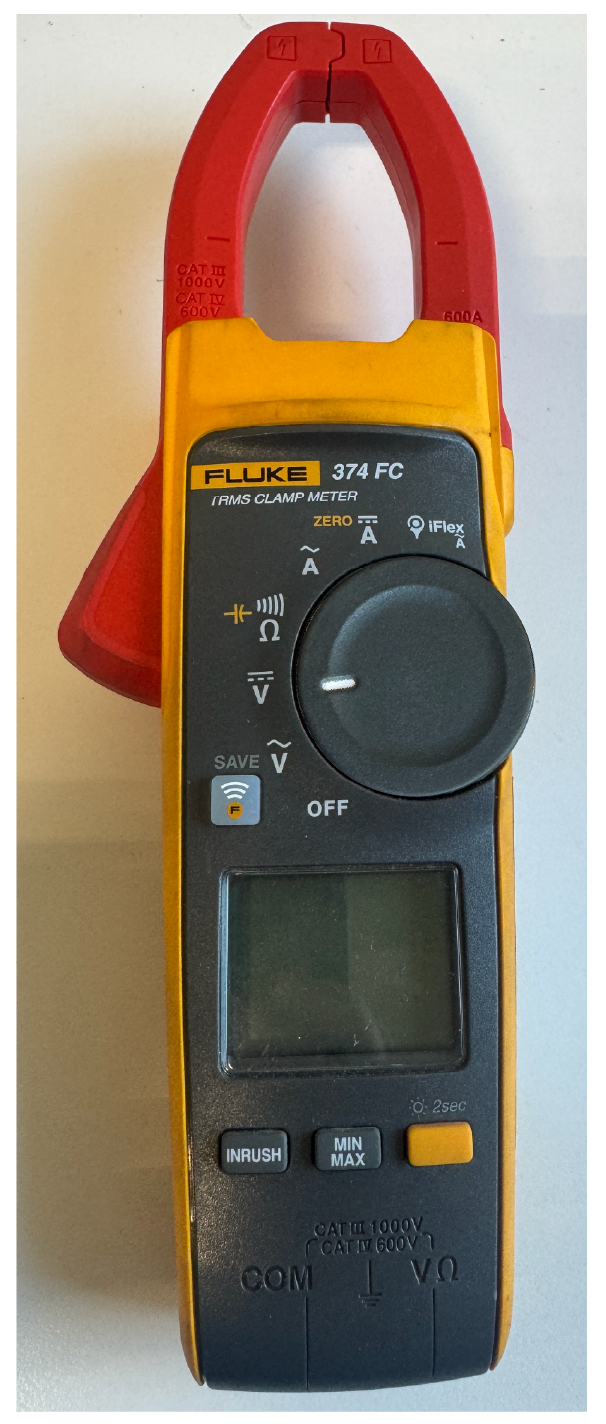
- Plug the positive and negative meter side leads into the meter.
- Connect the positive lead to the positive lead input.
- Connect the negative lead to
the negative lead input.
Klein ET600 Klein CL800 Fluke 374 FC 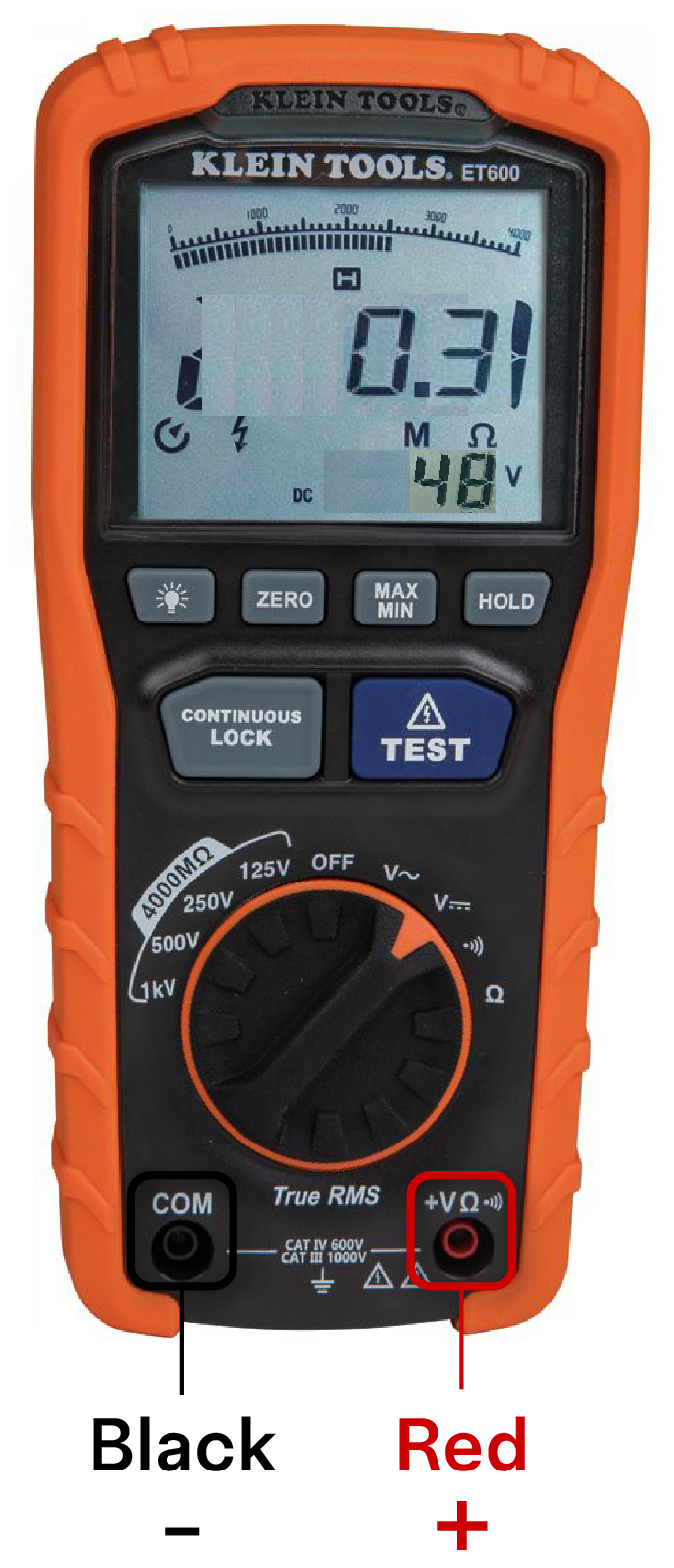
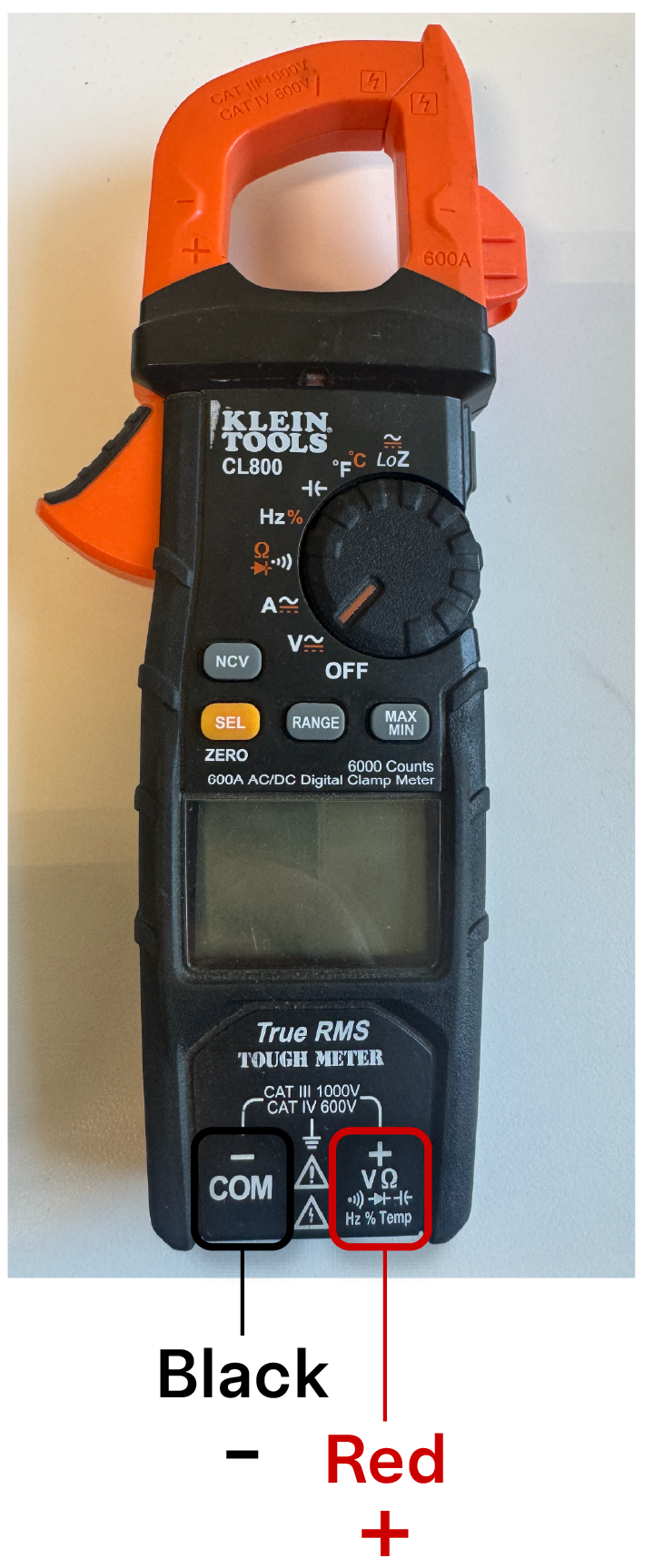
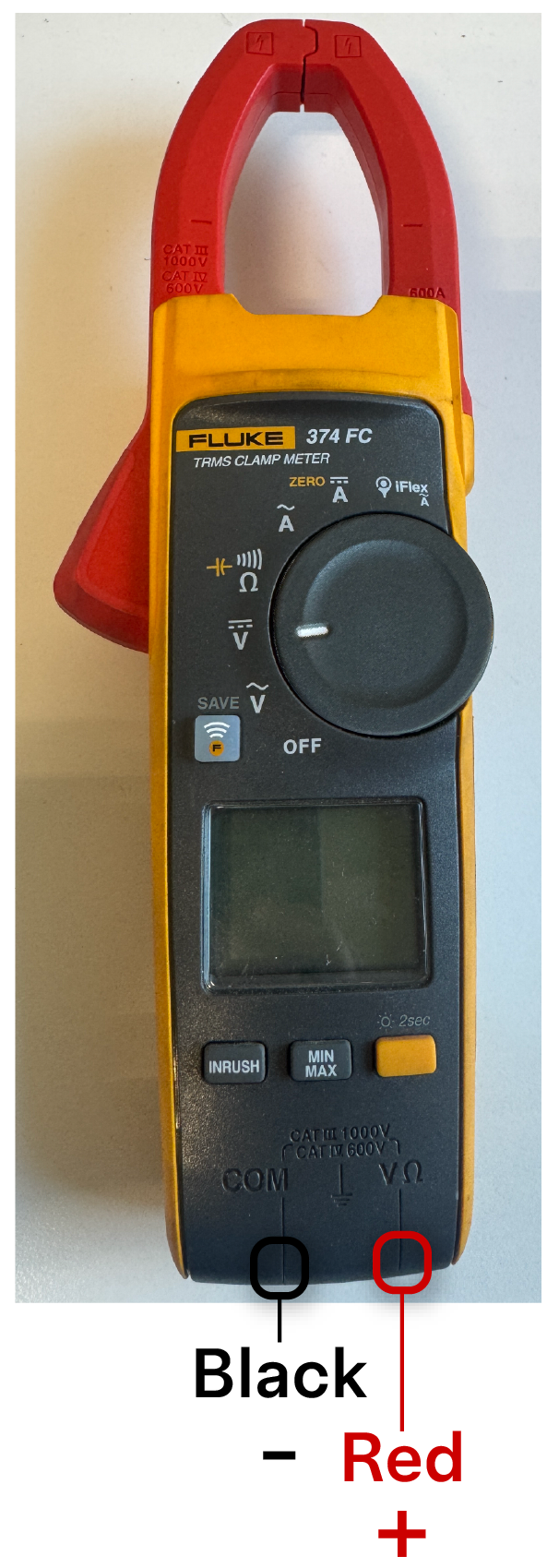
- Confirm the voltage
reading:
Tester Individual String Combined String Klein ET600 Voltage reading between 10 V and 29 V Voltage reading between 25 V and 48 V Klein CL800 Fluke 374 FC Voltage reading of approximately 2 V Voltage reading of approximately 4 V NoteThis voltage is not an accurate reflection of the module configuration. The voltage measurement can vary based on several factors, including time of day, the number of MCIs in the series and their placement, and the number of modules in the series.Because of these variables, the voltage reading likely will not be consistent even across strings with the same number of modules, especially if they are on a different mounting plane or tested at a different time.
NoteIt is still technically possible for a combined string to show a voltage below 25 V (if using the Klein ET600 or Klein CL800 tester), depending on factors like time of day, how many modules are in the string, or MCI placement. However, it is highly unlikely that a single, isolated string will produce a voltage as high as 29 V unless MCIs were misplaced or miswired. Use the elevated voltage as a clue when trying to identify or relabel strings during troubleshooting. The voltage of a combined string is typically equal to the sum of the two individual string voltages after they’ve been paralleled.For example, if using the Klein ET600 or Klein CL800 tester, string 1A reads 18 V and string 1B reads 17 V. The combined string will show an additive value of ~35 V when tested after paralleling the connection.
If using the Fluke 347 FC tester, string 1A reads 2 V and string 1B reads 2 V. The combined string will show an additive value of 4 V when tested after paralleling the connection.
- If the voltage reading is 0
V, it may be due to one of the following causes:
- There is an open circuit (no string closing the loop between the positive and negative terminals of the MPPT). This is most likely due to a missed connection while wiring the solar modules. Please double check that all module connections have been made and that all home run connections are fully secured.
- The positive and
negative conductors of the string have been mixed up with other
conductors, likely due to incorrect labeling.
- In this
example, the conductors for strings 1 and 3 have been
swapped (which often occurs because of incorrect labeling),
as indicated by the DC test result of 0 V:
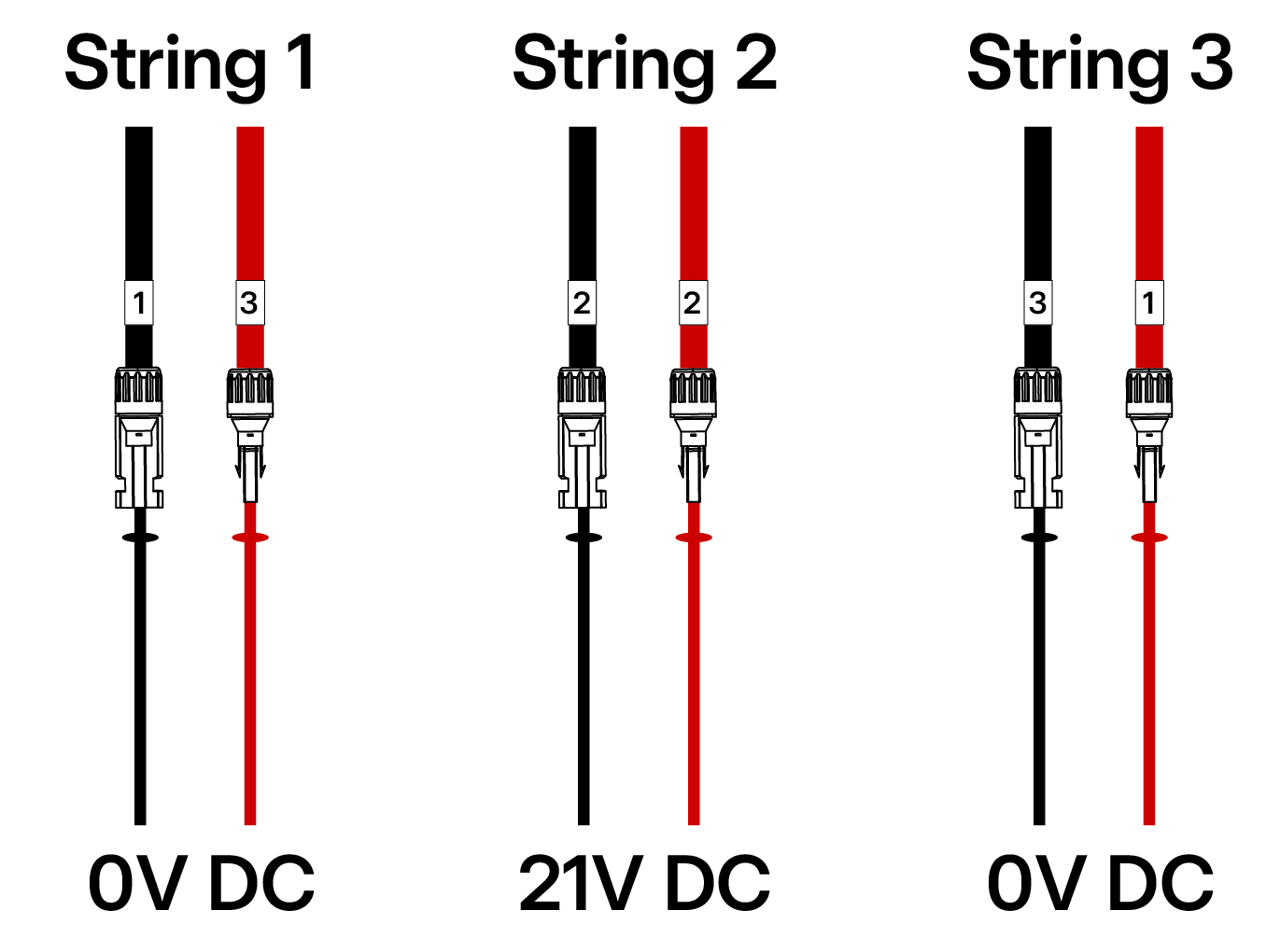
- After
correcting the wiring by swapping the positive conductors
for strings 1 and 3, both strings are now producing voltage
readings between 10 and 29 V (indicating that wiring is correct):
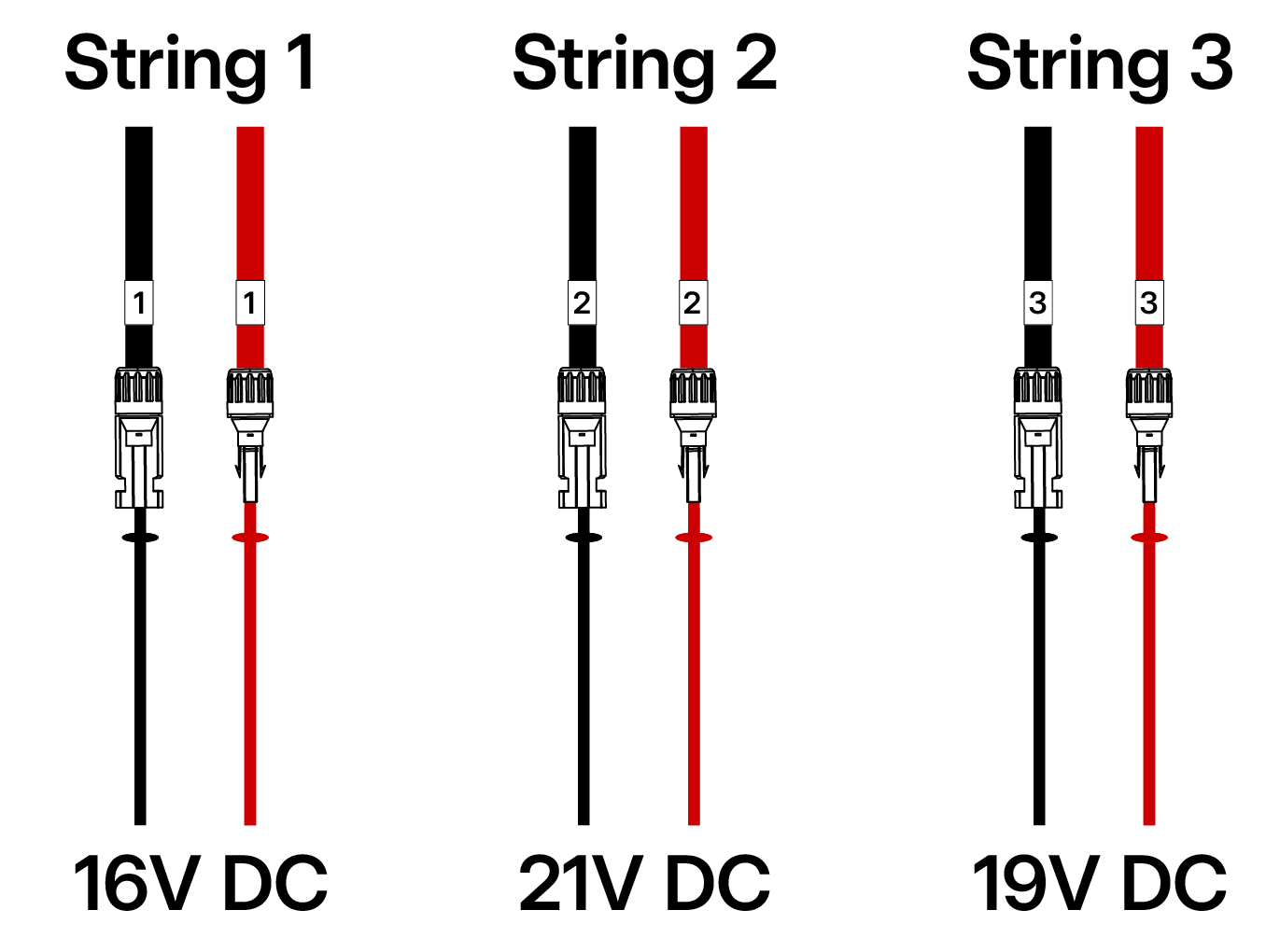
- In this
example, the conductors for strings 1 and 3 have been
swapped (which often occurs because of incorrect labeling),
as indicated by the DC test result of 0 V:
- If the voltage reading is
negative:
- The string likely has reverse polarity, meaning the positive and negative home runs were mixed up during wire management. This can be corrected either on the roof or by re-labeling the wires correctly at the inverter, and landing them in the appropriate MPPT input.
- Alternatively, check the meter:
